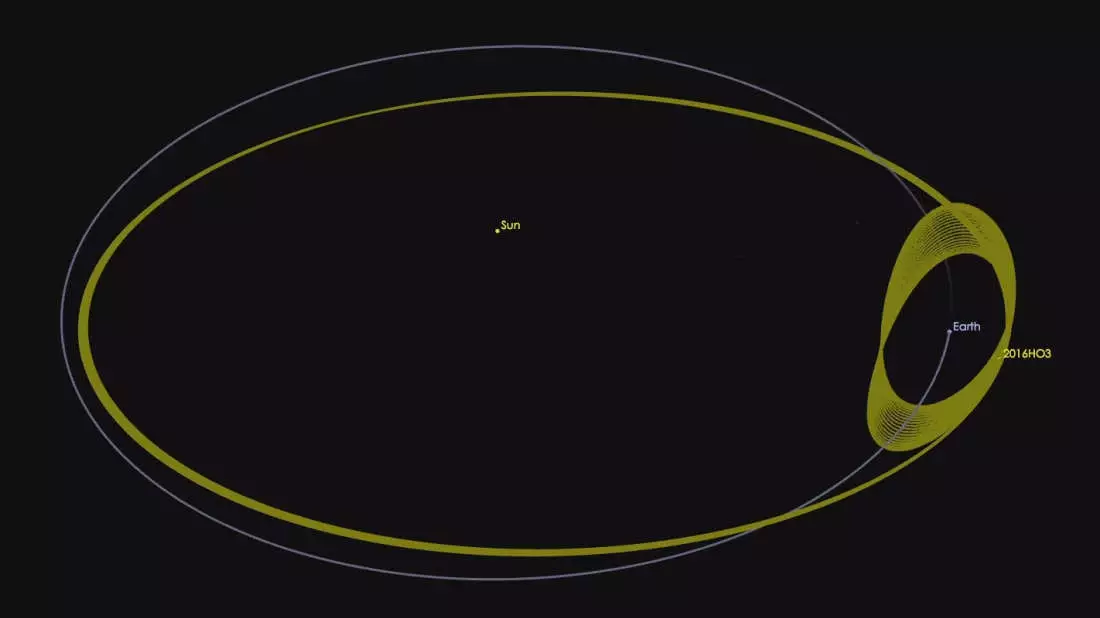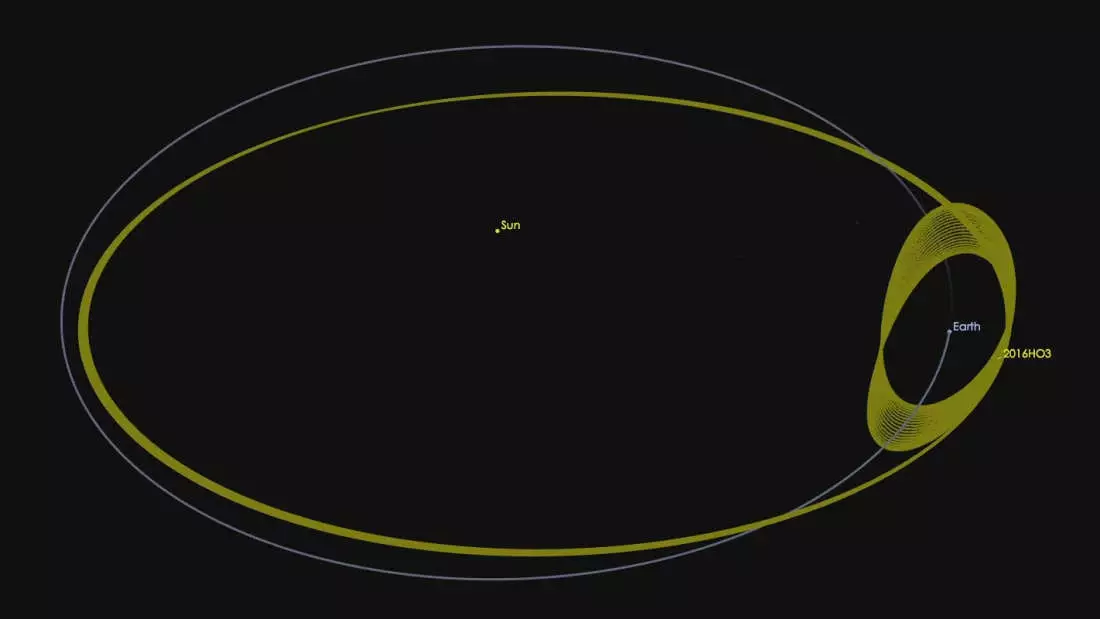
As a collection of numbers and letters, '2016 HO3' might sound like a prisoner number or product code, but it's actually a helluva lot more interesting. In fact, it's actually the name of an asteroid (relatively) near to Earth that, were it closer, might be considered another moon.
Discovered on 27 April 2016 by telescope in Hawaii, it's not clear yet what exact size it is, but it's believed to be somewhere between 40 and 100 metres. Scientists are also yet to figure out exactly how it relates to the earth gravitationally, as it changes each year, remaining in a kind of constant dance with the earth - a good thing when you consider the alternatives (come on, we've all seen Deep Impact).
Luckily NASA can explain it better. Credit: NASA Jet Propulsion Laboratory
Advert
According to IFLScience, details surrounding 2016 HO3 were quite scarce when it was first observed last year. However, scientists have now been able to look at it properly and officially identified it as an asteroid, as opposed to a bit of junk.
2016 HO3 orbits around the sun, IFLScience reports, and rotates on its axis twice in an hour. Having studied the asteroid during a close approach, Assistant Professor Vishnu Reddy and his team from the University of Arizona presented their findings at the Annual Division for Planetary Sciences Meeting, but admit it's not necessarily easy to examine.
"While HO3 is close to the Earth, its small size - possibly not larger than 100 feet - makes it challenging target to study," a statement by Reddy said. "Our observations show that HO3 rotates once every 28 minutes and is made of materials similar to asteroids."
After this is where it gets ridiculously complicated, with a load of space guff and words that the average mind can't comprehend, including myself.
Advert

Credit: NASA Jet Propulsion Laboratory
2016 HO3 and object similar to it are known as 'quasi-satellites' because their orbit isn't stable and so could be altered over time. This one is slightly different, however, as it's thought that it could remain stable for centuries.
"Of the near-Earth objects we know of, these types of objects would be the easiest to reach, so they could potentially make suitable targets for exploration," said Christian Veillet, director of the LBT Observatory, where the team studied the asteroid.
Advert
"With its binocular arrangement of two 8.4-meter [27.5-foot] mirrors, coupled with a very efficient pair of imagers and spectrographs like MODS, LBT is ideally suited to the characterisation of these Earth's companions."
Bloody good those scientists, aren't they?
Featured Image Credit: NASA Jet Propulsion LaboratoryTopics: Science, World News, UK News, US News, space, Moon, Earth